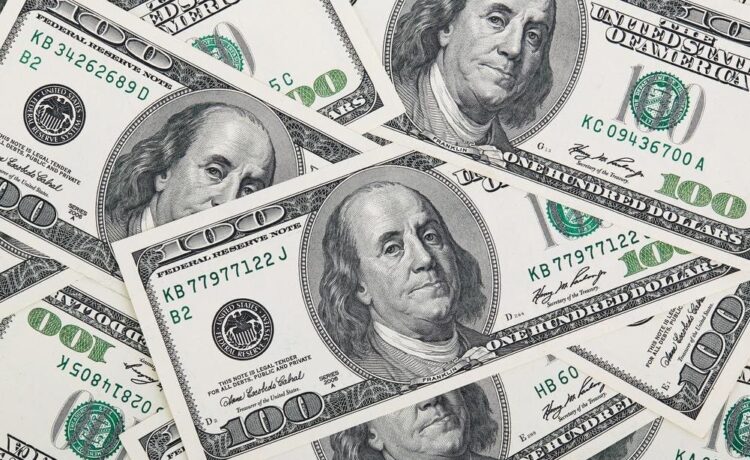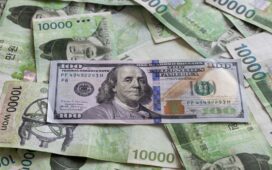getty
It’s the ultimate widow-maker trade: dumping the U.S. dollar on fears its reserve-currency status is ending.
Count the times speculators lived to regret shorting what’s still the center of the financial universe in the last 30 years. During the 1997-1998 Asian and Russian financial crises, investors wondered if overly aggressive Federal Reserve tightening might trigger a collective move away from the dollar.
Anger over the U.S. invasion of Iraq in the early 2000s seemed to imperil the dollar’s role in finance and trade. At the time, economist Joseph Quinlan, then with Bank of America Merrill Lynch, warned the “rogue nation” policies of then-President George W. Bush might wreck confidence in the dollar.
Then came the 2008-2009 Lehman Brothers crisis. At the time, economist Nouriel Roubini talked of a “nightmare hard-landing scenario” that would make markets “abandon the dollar” before and after the 2008 dislocation.
The 2013 Federal Reserve “taper tantrum” was another moment of dollar peril. So is today’s confusion about Trump’s latest trade war and what his tariffs mean for global trade. Add to that the chaos surrounding what Trump might or might not be doing about tariffs, who’s being targeted and why.
The bull market in turmoil emanating from Washington raises real questions about whether confusion and volatility are the goals here, not just side effects.
Not that the policies aren’t their own problem. Last week, Trump didn’t miss a beat in going after the Fed for not cutting interest rates as he wanted. Trump urged Fed Chairman Jerome Powell to “do the right thing” by easing despite U.S. inflation being uncomfortably close to 4%.
In his first presidency from 2017 to 2021, Trump pressured the Fed to ease early and often. His team even signaled that it might fire Powell. The Trump 2.0 gang has made noises about limiting the autonomy that gives the Fed such global credibility.
Trump 2.0 also seems to be spoiling for a currency war on top of tariffs. Earlier this month, Trump said he warned the leaders of China and Japan not to pursue beggar-thy-neighbor policies.
“I have called President Xi, I have called the leaders of Japan to say you cannot continue to reduce and break down your currency,” Trump said. “You cannot do it because it’s unfair to us. It’s very hard for us to make tractors, Caterpillar here, when Japan, China and other places are killing their currency, meaning driving it down.”
Trump notes that the response from Washington could be to tighten the screws even more with trade curbs. “So all of these things add up. And the way you solve it very easily is with tariffs,” he said.
To be sure, Trump has said in the past that he’d consider weakening the dollar to boost U.S. manufacturing. In April 2024, some top Trump advisers, including former trade chief Robert Lighthizer, began hinting at plans to go as far as devaluing the dollar.
As Lighthizer acolyte Jamieson Greer is now Trump’s trade representative, it’s probably wise at least to consider the possibility this White House might act to reduce the dollar’s value unilaterally.
There’s been chatter, too, about a “new Plaza Accord.” The reference here is to the 1985 currency deal signed at the Plaza Hotel, a New York institution that Trump once owned.
Then-U.S. President Ronald Reagan started his second term with a mercantilist gambit that still inspires Trump. In the mid-80s, Reagan’s Treasury secretary, James Baker, managed to strong arm the most powerful industrialized nations to push the yen sharply higher and the dollar lower.
Early in Trump’s presidency, then-Treasury Secretary Steven Mnuchin and advisors like Peter Navarro hinted at updating the pact to send the Chinese yuan soaring.
China is certain to say no. President Xi’s Communist Party understands how the Plaza deal precipitated Japan’s asset bubble in the late 1980s, leading to decades of stagnation. As economists buzz about “Japanification” risks in China, the odds are very low that Xi would ever entertain boosting the yuan to make Trump happy.
In the meantime, the U.S. national debt careening toward the $37 trillion mark and Trump hinting at new tax cuts can’t be great news for Washington’s credit rating. The U.S. only has one AAA rating left. The risk that Moody’s Investors Service might yank it away has Asian central banks sitting on nearly $3 trillion of U.S. Treasuries in near-panic mode.
None of this ensures that shorting the dollar is suddenly pivoting from widow-maker trade to winner. But the odds the dollar could stumble badly this year are rising as we speak.




